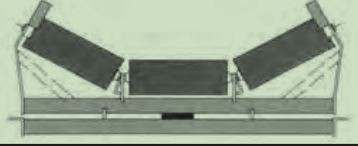 Afrikaans
Afrikaans  Albanian
Albanian  Amharic
Amharic  Arabic
Arabic  Armenian
Armenian  Azerbaijani
Azerbaijani  Basque
Basque  Belarusian
Belarusian  Bengali
Bengali  Bosnian
Bosnian  Bulgarian
Bulgarian  Catalan
Catalan  Cebuano
Cebuano  Corsican
Corsican  Croatian
Croatian  Czech
Czech  Danish
Danish  Dutch
Dutch  English
English  Esperanto
Esperanto  Estonian
Estonian  Finnish
Finnish  French
French  Frisian
Frisian  Galician
Galician  Georgian
Georgian  German
German  Greek
Greek  Gujarati
Gujarati  Haitian Creole
Haitian Creole  hausa
hausa  hawaiian
hawaiian  Hebrew
Hebrew  Hindi
Hindi  Miao
Miao  Hungarian
Hungarian  Icelandic
Icelandic  igbo
igbo  Indonesian
Indonesian  irish
irish  Italian
Italian  Japanese
Japanese  Javanese
Javanese  Kannada
Kannada  kazakh
kazakh  Khmer
Khmer  Rwandese
Rwandese  Korean
Korean  Kurdish
Kurdish  Kyrgyz
Kyrgyz  Lao
Lao  Latin
Latin  Latvian
Latvian  Lithuanian
Lithuanian  Luxembourgish
Luxembourgish  Macedonian
Macedonian  Malgashi
Malgashi  Malay
Malay  Malayalam
Malayalam  Maltese
Maltese  Maori
Maori  Marathi
Marathi  Mongolian
Mongolian  Myanmar
Myanmar  Nepali
Nepali  Norwegian
Norwegian  Norwegian
Norwegian  Occitan
Occitan  Pashto
Pashto  Persian
Persian  Polish
Polish  Portuguese
Portuguese  Punjabi
Punjabi  Romanian
Romanian  Russian
Russian  Samoan
Samoan  Scottish Gaelic
Scottish Gaelic  Serbian
Serbian  Sesotho
Sesotho  Shona
Shona  Sindhi
Sindhi  Sinhala
Sinhala  Slovak
Slovak  Slovenian
Slovenian  Somali
Somali  Spanish
Spanish  Sundanese
Sundanese  Swahili
Swahili  Swedish
Swedish  Tagalog
Tagalog  Tajik
Tajik  Tamil
Tamil  Tatar
Tatar  Telugu
Telugu  Thai
Thai  Turkish
Turkish  Turkmen
Turkmen  Ukrainian
Ukrainian  Urdu
Urdu  Uighur
Uighur  Uzbek
Uzbek  Vietnamese
Vietnamese  Welsh
Welsh  Bantu
Bantu  Yiddish
Yiddish  Yoruba
Yoruba  Zulu
Zulu conveyor pulley types
Understanding Conveyor Pulley Types
Conveyor pulleys are crucial components of conveyor systems, serving various operational roles that enhance efficiency and productivity in material handling. There are several types of conveyor pulleys, each designed for specific applications and conditions. Understanding these types can help in selecting the right pulley for your needs.
Understanding Conveyor Pulley Types
2. Idler Pulleys Idler pulleys, often found throughout the conveyor system, support the belt's return. They help in maintaining the belt's tension and alignment. Idler pulleys do not drive the belt but play a crucial role in guiding it smoothly along its path. These pulleys are typically lightweight and designed for minimal friction, which helps prolong the lifespan of the conveyor belt.
conveyor pulley types

3. Tail Pulleys Tail pulleys, located at the opposite end of drive pulleys, act as a critical component for belt tension maintenance. They help in keeping tension on the return side of the conveyor belt. While they do not provide motion, they are vital for ensuring that the conveyor system functions correctly, preventing the belt from sagging and potentially causing operational failures.
4. Snub Pulleys Snub pulleys are used to increase the belt's wrap angle around the drive pulley, which enhances friction and improves the drive's efficiency. These pulleys are especially useful in applications where additional traction is necessary, ensuring that loads are transported smoothly without slipping.
5. Bend Pulleys Bend pulleys change the direction of the conveyor belt, allowing it to navigate corners and turns. They are essential in complex conveyor layouts, facilitating the movement of materials in various directions without disrupting the overall flow of the system.
In conclusion, selecting the right type of conveyor pulley is crucial for optimizing efficiency in any conveyor system. By understanding the various pulley types—drive, idler, tail, snub, and bend—users can make informed decisions that lead to improved operational performance and longevity of the equipment.
-
Revolutionizing Conveyor Reliability with Advanced Rubber Lagging PulleysNewsJul.22,2025
-
Powering Precision and Durability with Expert Manufacturers of Conveyor ComponentsNewsJul.22,2025
-
Optimizing Conveyor Systems with Advanced Conveyor AccessoriesNewsJul.22,2025
-
Maximize Conveyor Efficiency with Quality Conveyor Idler PulleysNewsJul.22,2025
-
Future-Proof Your Conveyor System with High-Performance Polyurethane RollerNewsJul.22,2025
-
Driving Efficiency Forward with Quality Idlers and RollersNewsJul.22,2025





























